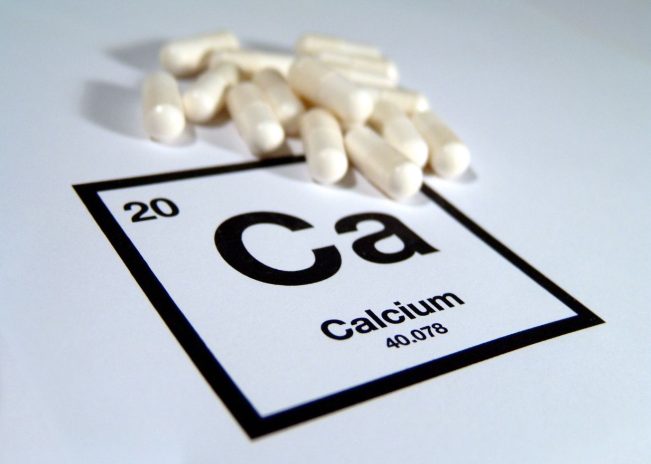Try Di-Calcium Malate
Not all calcium supplements are equal. In fact, calcium supplementation has taken some heat in recent years, in part for the low absorbability of many supplements. Read on to learn about your options when it comes to the most bioavailable calcium for reaching and maintaining healthy calcium levels.
Are calcium supplements safe?
First, we recommend a conversation with your doctor every time you are thinking of taking a new supplement.
Calcium supplements are not “dangerous” in a toxic chemical way, but just like any elemental mineral, you can have too much calcium. There are serious symptoms and side effects that accompany having too-high calcium levels in your body [1].
Taking excessive amounts of calcium supplements can cause too high calcium in the circulation (hypercalcemia). However, this condition is usually linked to another disease or medication. If you consult a professional and take supplements as recommended, there are few risks.
Do calcium supplements work?
Calcium is best absorbed with food, a little at a time throughout the day. If you can get the calcium you need through dairy products, canned fish, and other fortified foods, that’s great.
For many of us, however, it is hard or impossible to get the calcium we need from the food we eat daily. And, as we age, many of us face serious consequences (we’re looking at you, osteoporosis!) of living with low calcium intake earlier in life. It’s much easier to focus on balancing calcium levels before you have a bone density problem, than it is to fix a bone density problem with calcium supplements.
Low calcium intake is known to contribute to diminished bone density, early bone loss, and an increased risk of fractures [2]. Fortunately, supplementation can address nutritional deficiencies. Calcium supplements can support the health and longevity of your bones.
One potential setback on the road to healthy calcium levels is the inverse relationship between calcium intake and absorption. The more calcium you ingest, the less you absorb. Absorption of calcium from food is about 45% at intakes of 200 mg/day but only 15% when intakes are higher than 2,000 mg/day [3]. Age can also negatively affect absorption of dietary calcium [3].
This is why the form of your calcium supplement matters so much. The most common forms of calcium supplement are calcium carbonate and calcium citrate. Calcium carbonate is highly insoluble, and so must be taken with a meal for absorption. People with low levels of stomach acid may still have trouble absorbing it. Calcium citrate is better absorbed than the carbonate form, but must be avoided by those intolerant or allergic to citrus. So which form is the most bioavailable calcium?
Why take di-calcium malate?
Di-calcium malate may be the answer to absorption problems. With two (“di”) calcium atoms bound to each molecule of malic acid, this form of calcium is more concentrated than other supplements. This means each capsule can actually contain more elemental calcium.
Yes, we explained that more is not always better when it comes to calcium absorption. However, in clinical trials, di-calcium malate has been demonstrated to be a most bioavailable calcium with a longer half-life than other forms of calcium supplement [4].
If you notice the form of calcium has changed in your Metabolic Maintenance products, please take comfort in the fact that this is an upgrade. As data grows showing the advantages of one ingredient over another, so do our formulas change. This is evidence of pragmatism, our evolution as a company, and our commitment to delivering only the highest quality products.
The benefits to exchanging calcium citrate for di-calcium malate extend beyond bioavailability. Namely, our choice of a more concentrated form of calcium makes room in each capsule for other nutrients in a blended supplement.
In a standalone supplement, you may notice more empty space within a capsule. This is evidence of our promise of “no fillers”. We have expertly measured the dose of di-calcium malate to deliver the dose of calcium claimed on the label, and added nothing else. Pure, quality nutrition at its finest.
References
- Goltzman, David. “Pathophysiology of Hypercalcemia.” Endocrinology and Metabolism Clinics 50.4 (2021): 591-607.
- Mayo Clinic. “Osteoporosis: Symptoms and Causes.” Accessed June 15, 2022. https://www.mayoclinic.org/diseases-conditions/osteoporosis/symptoms-causes/syc-20351968#:~:text=A%20lifelong%20lack%20of%20calcium,in%20both%20men%20and%20women.
- NIH. “Calcium”. Fact Sheet for Health Professionals. https://ods.od.nih.gov/factsheets/Calcium-HealthProfessional/#:~:text=Absorption%20of%20calcium%20from%20food,calcium%20%5B1%2C4%5D.
- Natural Products Insider. “DiCalcium Malate tops in bioavailability”. Jul 24, 2006. https://www.naturalproductsinsider.com/vitamins-minerals/dicalcium-malate-tops-bioavailability
